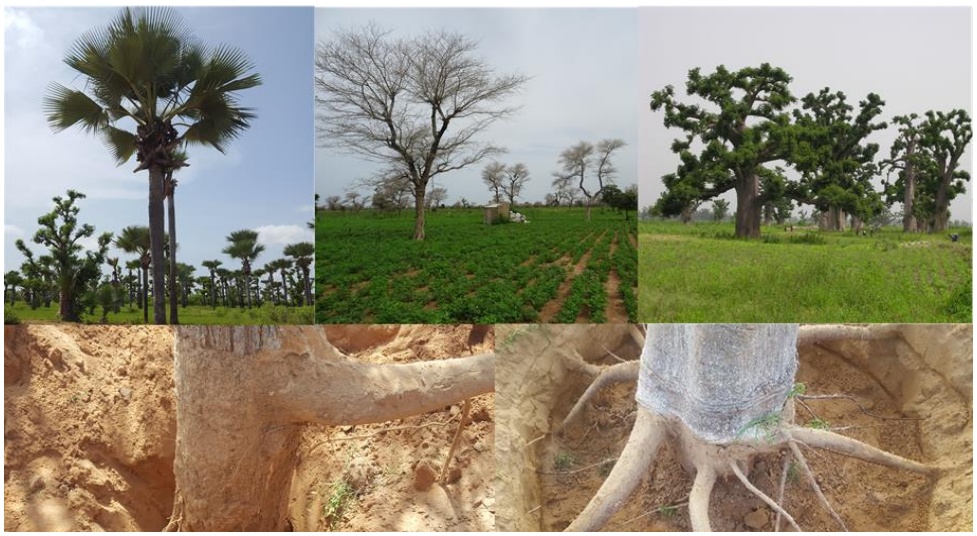Universitetsavisen
Nørregade 10
1165 København K
Tlf: 21 17 95 65 (man-fre kl. 9-15)
E-mail: uni-avis@adm.ku.dk
PhD thesis defense
PhD thesis defense — PhD thesis defence - 23 May 2022 at 13:00
Date & Time:
Place:
Auditorium Landskab, Department of Geosciences and Natural Resource Management, Rolighedsvej 23, 1958 Frederiksberg
and
https://teams.microsoft.com/l/meetup-join/19%3ameeting_ZjJiZDE3ZmYtOGQxYy00MjMyLTlhMzQtZGNjYTliNjRkNGNm%40thread.v2/0?context=%7b%22Tid%22%3a%22a3927f91-cda1-4696-af89-8c9f1ceffa91%22%2c%22Oid%22%3a%22a08873b4-2fcf-43bb-8c5a-62d2e2bd2eb6%22%7d
Hosted by:
Section of Forest, Nature and Biomass, Department of Geosciences and Natural Resource Management, Rolighedsvej 23, 1958 Frederiksberg
Cost:
Free
Fatou Gning defends her thesis:
Ecophysiology of Sahelian agroforestry tree species and their adaptive potential: Rooting architecture and water storage
Supervisor:
Associate Professor Anders Ræbild, Forest, Nature and Biomass, UCPH
Assessment Committee:
Professor Per Christer Odén, Swedish University of Agricultural Sciences
Professor Roeland Samson, University of Antwerp, Belgium
Professor Henrik Meilby (Chair), Department of food and Resource Economics, UCPH
Summary:
Water limitation is the main factor affecting the tropical dry forest, thus understanding of specific trees species responses to drought may help to predict the impacts of global water deficits in forested areas. Research relating to plant water content and its relation to leaf phenology and root distribution of Sahelian species is limited. The aim of this thesis was to enhance knowledge about the water storage and rooting distribution of different agroforestry tree species in Senegal. The PhD thesis consists of three manuscripts based on independent studies. Manuscript one aimed to assess tree root distribution along a climatic gradient. This study showed a great variation of root density across climate, soil depth and distance. Root density was more abundant in the southern than in the northern site (characterized by low rainfall). In the north, roots proliferated more deeply than in the south and this was more prominent for Faidherbia albida and Borassus akeassii compared to Adansonia digitata, where roots grew more shallowly. Manuscript two relates to analyses of the rooting behavior compared across nine tree species with three water regimes (top irrigation, deep irrigation at 50 cm depth and drought treatment). This study illustrated a strong influence of water supply on the biomass allocation as well as the rooting profile. All tree species penetrated the soil much deeper at 2 m depth under drought than those receiving regular watering. The roots of A. digitata, Sterculia setigera and Anacardium occidentale were concentrated in the shallower strata, while Acacia species proliferated up to 2 meters. Manuscript three demonstrates the dynamics of water storage and leaf phenology was examined by ground measurements and satellite remote sensing. The results showed that rainfall has a large influence on water content for many of the tree species studied, and this in turn correlated to leaf development except for F. albida bearing leaves during dry season. These results confirm that plant water content (determined from above ground measurements) co-varied with results from the vegetation optical depth in the northern and center sites. However, in the southern site (sub-humid site), more research is needed before remote sensing can infer the water content of vegetation. This study has a major implication for management of agroforestry systems and could be used in the modeling community for assessments concerning global ecosystem processes and climate change adaptation.
